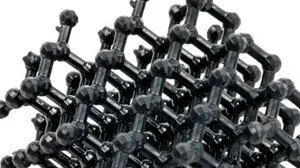Understanding Dimensional Accuracy in Additive Manufacturing
Additive Manufacturing (AM) provides dimensional accuracies as percentages based on dimension checking due to the inherent nature of the processes, most of which utilize heat. As printed parts cool, they experience shrinkage. While parts are pre-scaled to compensate for this shrinkage, the degree to which they shrink is often geometry-specific. However, the effect is consistent across multiple builds for the same part. This consistency means that after fine-tuning a part's design, future builds can achieve higher accuracy than the general guidelines suggest.
Dimensional Accuracy for MULTI JET FUSION
Multi Jet Fusion (MJF) is a versatile additive manufacturing technology known for producing both rigid and flexible parts, depending on the material used. When working with MJF, two common materials are Nylon and Thermoplastic Polyurethane (TPU).
MJF Nylon: The dimensional accuracy is typically ± 0.3 mm for dimensions up to 100 mm. For parts larger than 100 mm, an additional tolerance of ± 0.003 mm per millimeter is applied.
MJF TPU: Due to TPU's inherent elasticity, the expected dimensional accuracy is ± 1.0 mm for parts up to 100 mm.
MJF Nylon is suitable for producing functional prototypes and end-use parts that require a high degree of precision, while MJF TPU is ideal for applications where flexibility and impact resistance are more important than exact dimensional accuracy, such as gaskets, seals, and latticed components.
General Dimensional Accuracy for DLP/DLS Materials
Digital Light Processing (DLP) and Digital Light Synthesis (DLS) are photopolymer-based additive manufacturing technologies known for their ability to produce intricate details with high resolution.
Expect a dimensional accuracy of ± 0.075 mm and add ± 0.010 mm for each additional millimeter.
With repeat builds, tolerances can improve to ± 0.065 mm, independent of part size, making these technologies ideal for applications requiring fine details and smooth surface finishes.
Dimensional Accuracy for L-PBF Metals
Laser Powder Bed Fusion (L-PBF) is a metal additive manufacturing process that offers excellent mechanical properties and high precision. The dimensional accuracy for L-PBF metals is typically ± 0.050 mm with an additional tolerance of ± 0.005 mm per millimeter for larger parts.
When tighter tolerances are necessary, we recommend printing the part with extra material and then having critical surfaces milled into spec.
Conclusion
Understanding the dimensional accuracy of different materials and processes in additive manufacturing is essential for producing parts that meet your specific requirements. By knowing the tolerances associated with MJF Nylon, MJF TPU, DLP/DLS materials, and L-PBF metals, you can make informed decisions to ensure the success of your 3D printing projects.
If you have any questions about how these tolerances apply to your projects or need guidance on selecting the right material and process, feel free to contact us. We're here to help you achieve the best results with your additive manufacturing endeavors.

